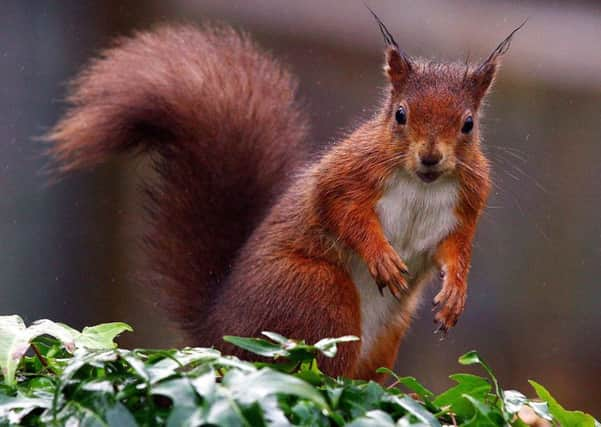Threatened red squirrels holding their ground, surveys show


A new report from the conservation taskforce Saving Scotland’s Red Squirrels shows an overall positive picture for what is considered one of the country’s most endangered mammals.
Survey results from 2017 show red squirrel populations have remained stable over the past year.
Advertisement
Hide AdAdvertisement
Hide AdThe most encouraging reports came from north-east Scotland, where reds have significantly increased their range.
There has been a recent flood of sightings increasingly close to Aberdeen city centre.
In Tayside and the central lowlands, the species has held its ground.
However, findings in southern Scotland were more mixed.
While reds have successfully retained their territories in most parts of the south, none were spotted in Berwickshire during the count.
The key threat to the survival of reds comes from the alien grey squirrel, which was introduced from the US in the 19th century.
Scotland is the UK stronghold for red squirrels, the nation’s only indigenous squirrel, hosting around three quarters of the total population.
Estimates suggest around 120,000 live north of the border.
But they are outnumbered two to one by greys, which have been spreading northwards over several decades.
Greys out-compete their smaller cousins for food and nesting sites, as well as transmitting disease.
Advertisement
Hide AdAdvertisement
Hide AdThey carry the squirrelpox virus, which causes them no harm but can be fatal for reds.
Saving Scotland’s Red Squirrels, which was awarded a £2.4m National Lottery grant last year, is led by the Scottish Wildlife Trust in partnership with Scottish Natural Heritage, Forestry Commission Scotland, RSPB Scotland, Scottish Land & Estates and Red Squirrel Survival Trust.
The team, assisted by a network of volunteers, has been monitoring squirrel populations in the parts of the country where reds are most at risk from invading greys since 2011.
Measures to help safeguard vulnerable red colonies include culling greys.
The move has sparked outrage among some animal lovers, but conservationists believe such extreme measures are necessary to save reds from potential extinction.
“Unfortunately red squirrel numbers have continued to fall in parts of the Scottish Borders, especially since the arrival in Berwickshire of the deadly squirrelpox virus from south of the border in 2011,” said project manager Dr Mel Tonkin.
“However, there are still good populations of red squirrels from Galashiels and Jedburgh westwards, and Saving Scotland’s Red Squirrels is carrying out conservation work aimed at safeguarding these squirrels.
“In Dumfries and Galloway red squirrels continue to do well but are threatened by increasing records of grey squirrels, which appear to be spreading into Nithsdale from the east and north.
Advertisement
Hide AdAdvertisement
Hide Ad“It is vital that the work we do here is stepped up to make sure these red squirrel populations remain healthy.”
Mary-Anne Collis, red squirrel conservation officer for Argyll, the Trossachs and Stirling, added: “In the central lowlands red squirrels are holding their ground, and as a result we’ve started to see them in areas where they haven’t been seen for a long time.
“This is particularly noticeable to the south and east of Loch Lomond and the Trossachs National Park, which is now predominantly a red-only zone.
“If it wasn’t for our fantastic volunteers that brave the unpredictable spring weather to help us with these surveys then we wouldn’t be able to see the positive impact that our conservation work is having.”
A pioneering project by the conservation charity Trees for Life has seen red squirrels successfully reintroduced to parts of the north-west Highlands where they were previously found but had vanished from due to felling of natural forests.
Evidence suggests the relocated animals are thriving and breeding in their new homes, which are free from greys.